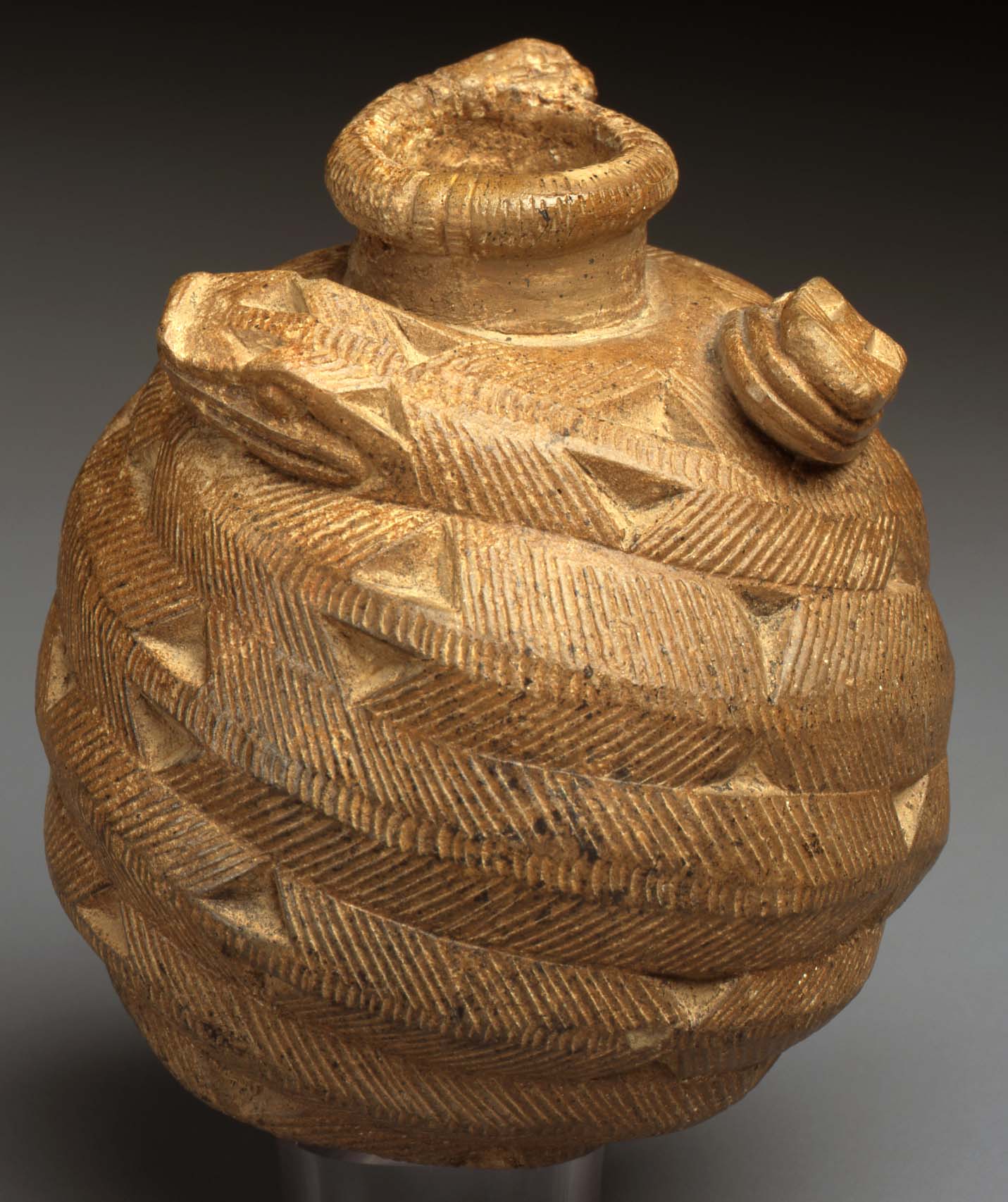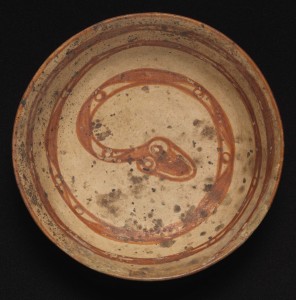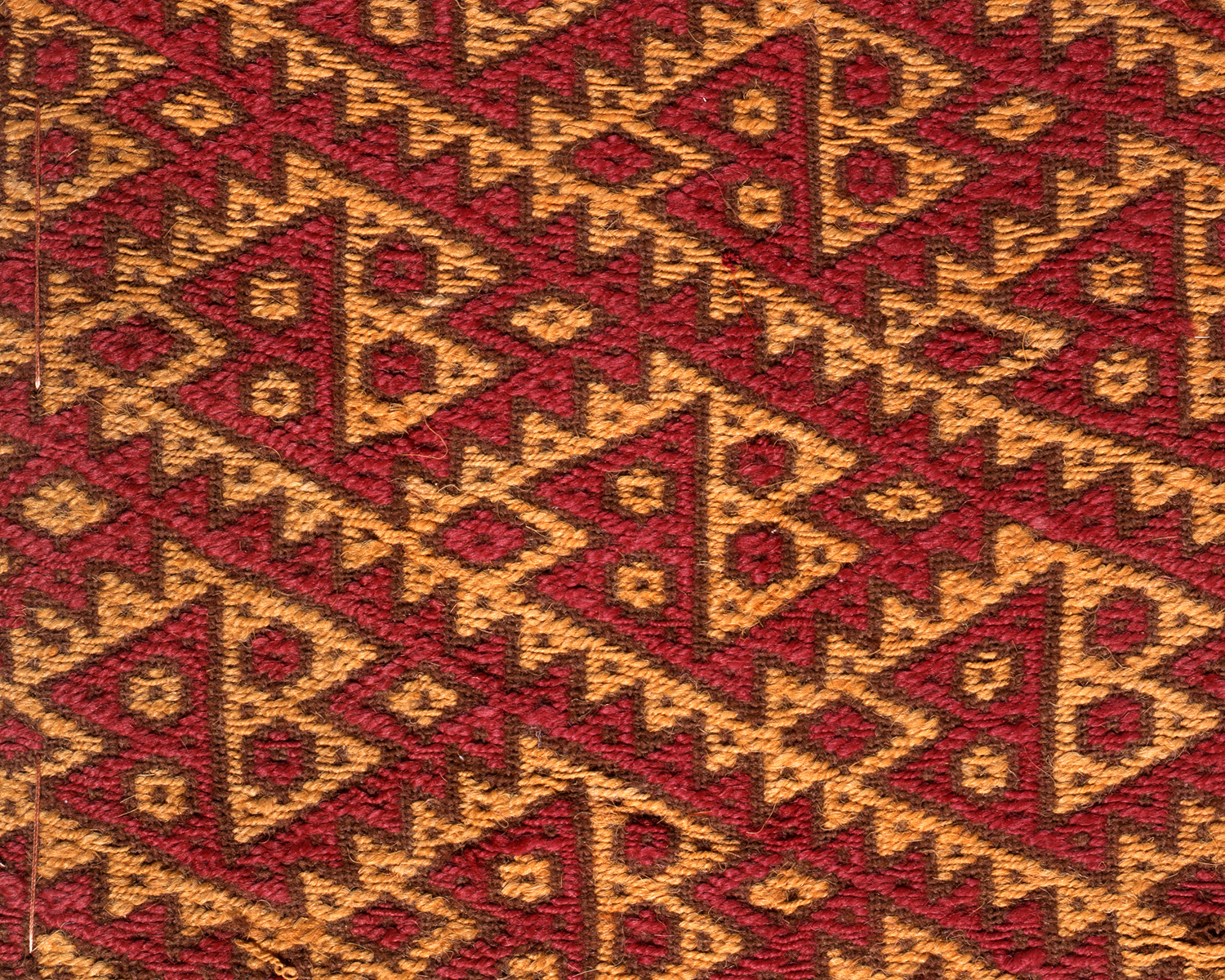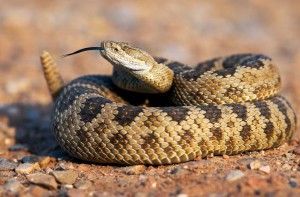“I was becoming a snake. I had the desire to jump out into the water to find frogs and insects to eat.”
-Don Pablo Amaringo

Brownware Vessel with Intertwined Rattlesnakes South America, Northern Andes, Colombia. Tairona. 1000-1500 AD. Ceramic. 1992.15.51. Gift of Cora W. and Lawrence C. Witten II. Photo by Michael McKelvey.
Snakes, such as rattlesnakes (Crotalus spp.), are one of the most recurrent animals seen in visions; their slithering and coiling movements reportedly add to the frightening and dizzying quality of the experience. In nature snakes coil for many reasons: they curl around themselves to rest and to ready themselves to strike; they coil around each other to copulate and to fight; they swirl around trees and posts to climb, hover, and fall onto their prey below.
In all these snake effigies, the coiled position is prominent, whether painted or sculpted. The pair of spiraling snakes in this brownware vessel from Colombia, plus a tiny third one on the rim swallowing its own tail, may seem benign; however, the crosshatching on the two larger snakes’ tails, visible on the vessel’s underside, suggests that they are venomous rattlesnakes. Dangerous animals inhabit the Other Side, where the shamans battle strange creatures, fatal diseases, spirits, and other malevolent shamans.

Bowl with Snake Motif South America, Central Andes, North Highlands. Cajamarca. Early Intermediate Period, 1-650 AD. Ceramic. 1989.8.24. Gift of William C. and Carol W. Thibadeau. Photo by Bruce M. White, 2011.
Visions may be overtly referenced in art as well. In fact, modern Amazonian shamans agree that the spirit of caapi is a snake because they look the same and the vine causes one to see snakes. This bowl from Peru is even more suggestive of a literal and visual connection between snake, vine, shamans, and visions, because the coiled snake’s painted markings resemble bulging trance eyes. This creative metaphor makes this an all-seeing or visionary snake — extra eyes representing enhanced sight, like that of a shaman.

Textile Fragment with Interlocking Snake Design South America, Central Andes, Central Coast. Chancay. Late Intermediate Period, 1100-1470 AD. Cotton, Camelid fiber. 2002.14.3. Gift of C. Clay Aldridge. Photo by Michael McKelvey.
In traditional shamanic thought snakes are not only frightening aspects of altered consciousness that apprentice shamans must overcome, they also have great wisdom to impart as well, such as the insignificance of the human ego. On a higher level, visions include revelations of important abstract concepts, such as the fundamental dualism of the cosmos. Here this idea is embodied in symmetrically interlocked snakes.
There is a word in Quechua, the Inka language, for this basic complementarity: ayni (eye NEE). The abstract intertwined snakes in this thousand-year-old Peruvian Chancay textile (from a culture preceding and then conquered by the Inka) might be challenging to distinguish at first because the artist has dovetailed perfectly the yellow and the red serpents, leaving no background space. Like the pairing of the snakes, a diamond accompanies each one in front of the mouth, suggesting they stand for what the snake eats (such as other animals’ eggs). The almost magical ability for snakes to unhinge their jaws and consume prey larger than themselves is another possible referent. In turn, to be consumed by a snake during a vision is considered by many Amerindians to be a privilege bestowed on only the bravest shamans.
